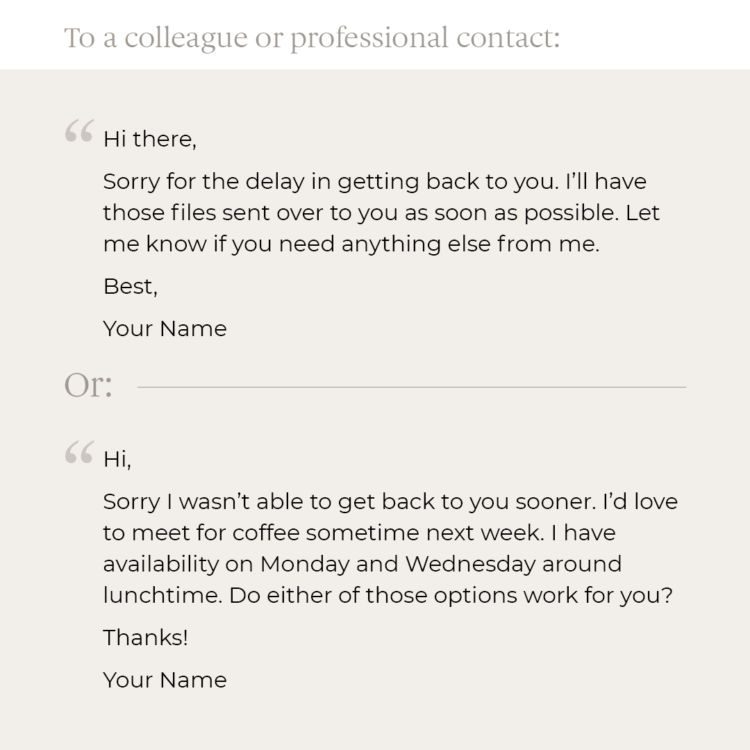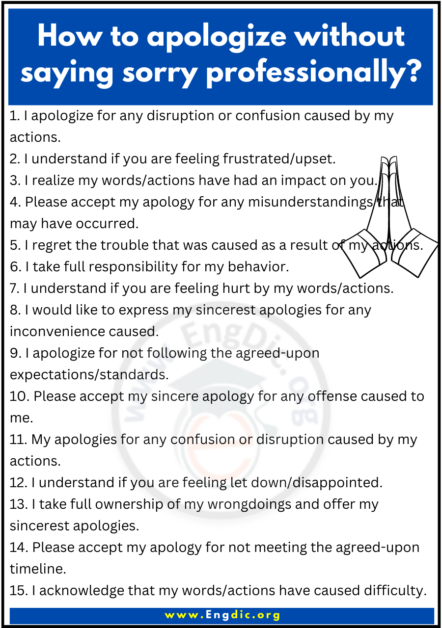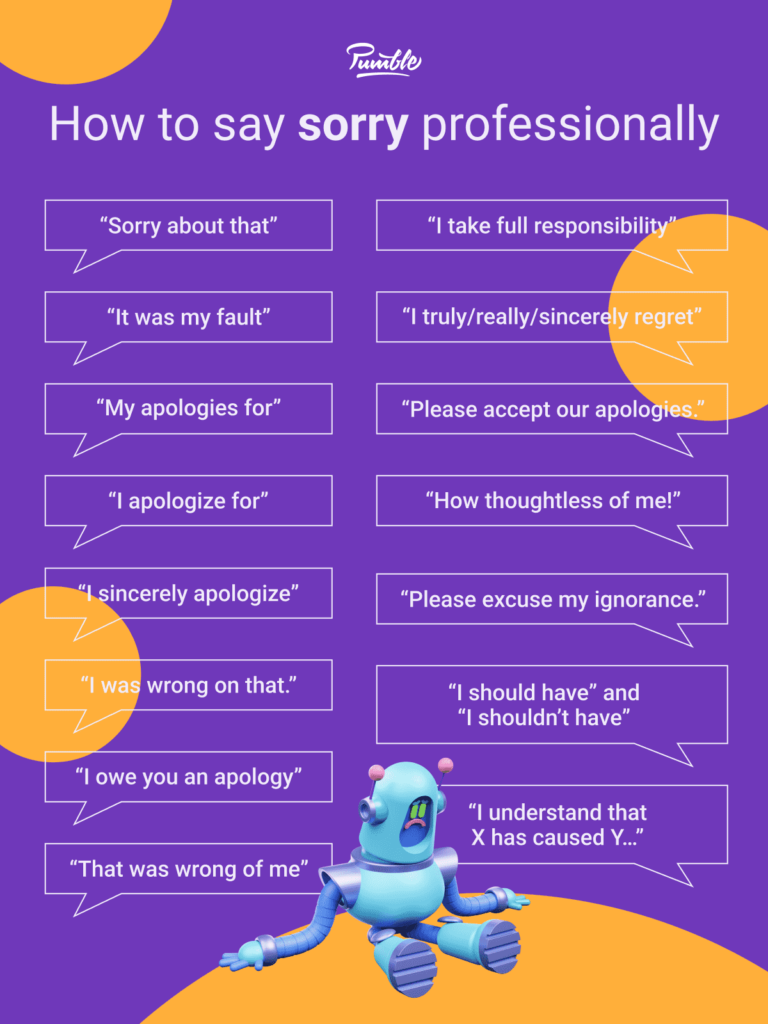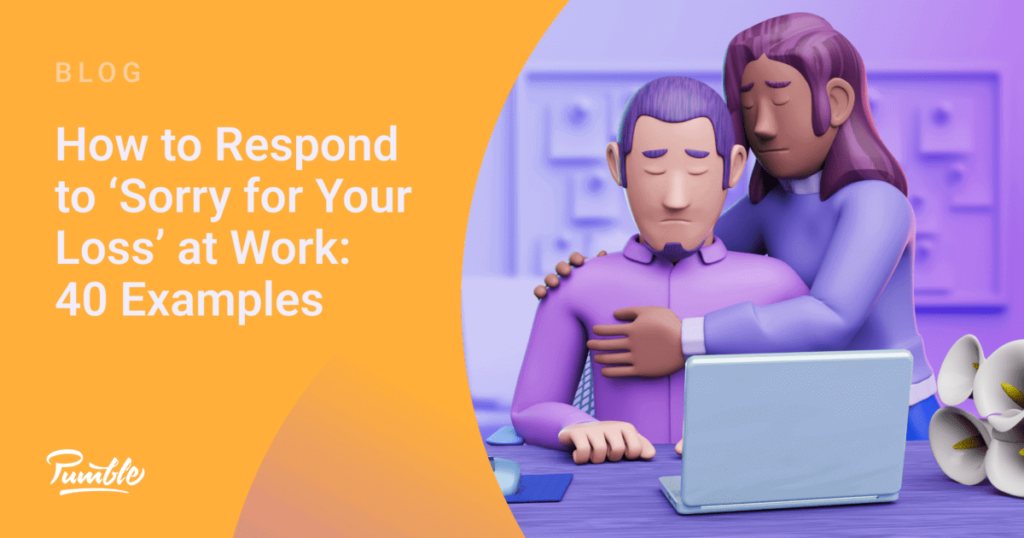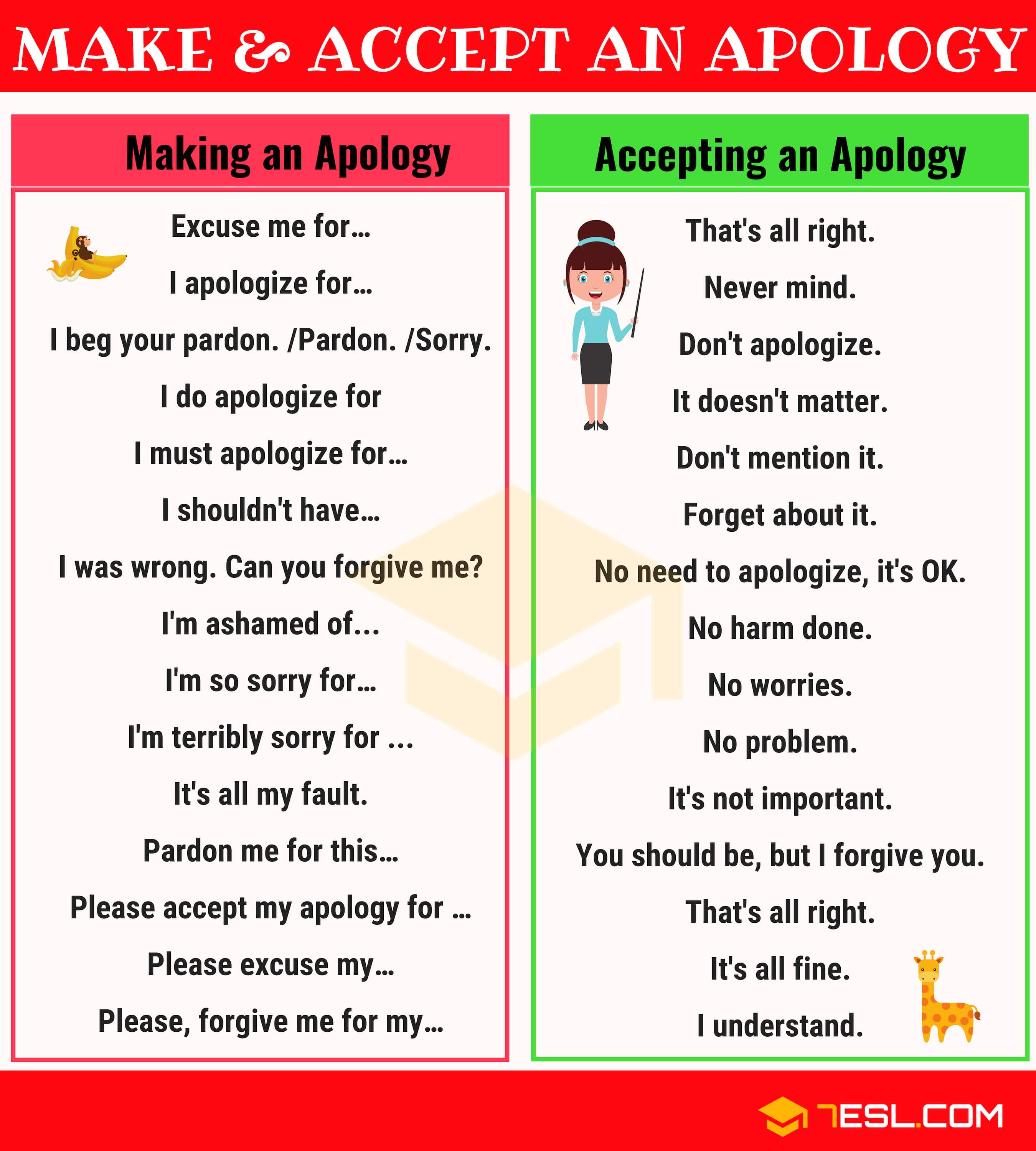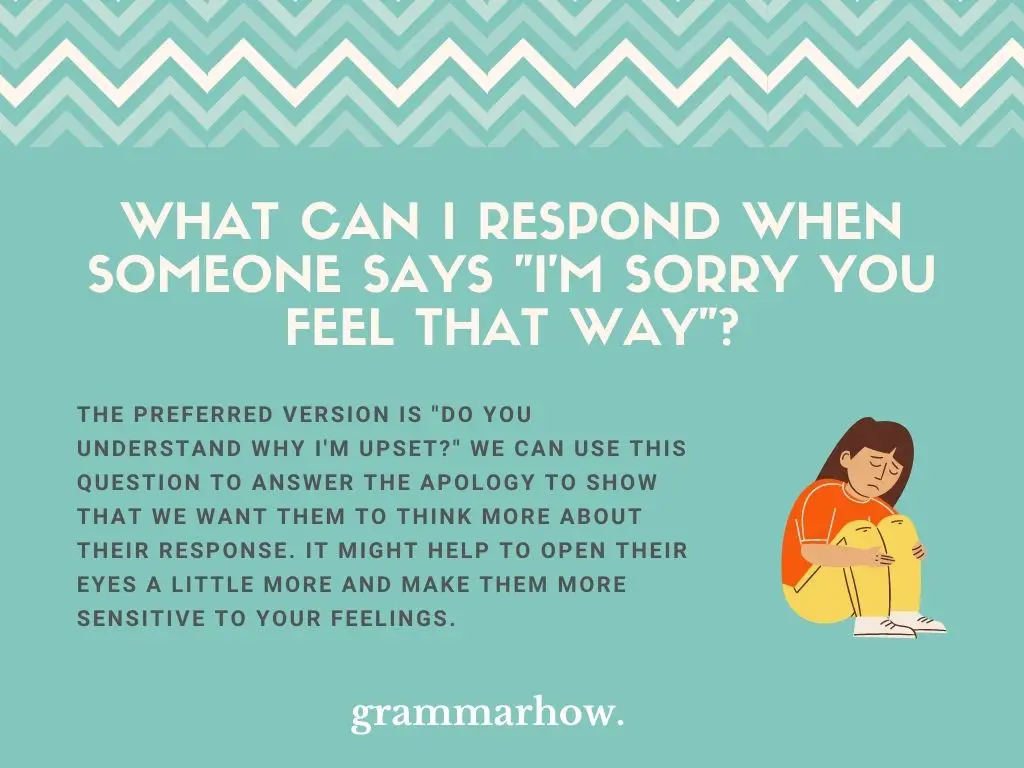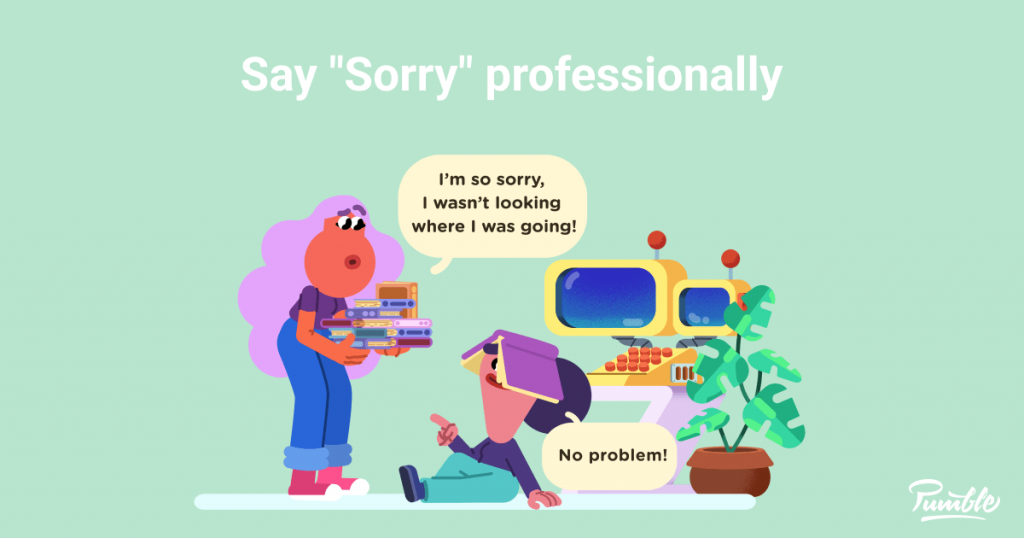How To Respond To Sorry Professionally
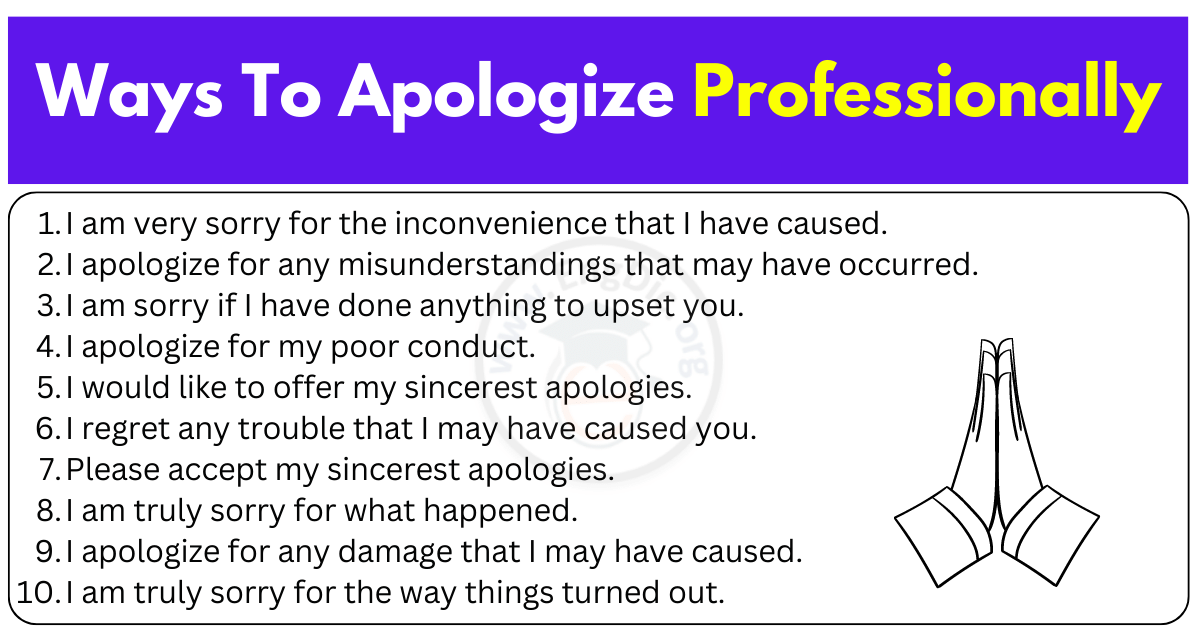
In today's fast-paced business environment, knowing how to professionally respond to an apology is crucial for maintaining positive relationships and navigating workplace dynamics. Mastering this skill can significantly impact your career trajectory.
This article provides a guide on how to effectively respond to an apology in a professional setting, ensuring clarity, respect, and a focus on moving forward.
Understanding the Apology
Before responding, carefully consider the sincerity and context of the apology. Was it genuine, or a perfunctory gesture? This understanding will inform your response.
Recognize the type of mistake that was made. Was it a minor oversight or a more significant error that had consequences for other people in the team?
Immediate Acknowledgement
A prompt acknowledgment is almost always beneficial. Delaying your response can exacerbate the situation and convey a lack of concern.
Begin with a simple, direct phrase like "Thank you for your apology." This shows that you’ve received and acknowledged their remorse.
Acceptance of the Apology
Accepting the apology, when appropriate, is key to moving forward. Phrases like "I accept your apology" or "Apology accepted" are clear and concise.
Avoid adding caveats or passive-aggressive comments. Keep the tone neutral and focused on resolution.
Focusing on the Future
After accepting the apology, shift the focus toward solutions and future actions. Emphasize a commitment to preventing similar issues in the future.
Consider saying something like, "Let's discuss how we can prevent this from happening again." This proactive approach is constructive and forward-thinking.
Maintaining Professionalism
Throughout the exchange, maintain a professional and respectful tone. Even if the situation was personally upsetting, avoid emotional outbursts or accusatory language.
Focus on facts and solutions rather than dwelling on feelings. Use "I" statements (e.g., "I felt concerned when...") to express your perspective without blaming.
When to Seek Further Action
In some cases, an apology alone may not be sufficient. If the issue involved significant misconduct or legal implications, further action may be necessary.
Consult with HR or a supervisor to determine the appropriate next steps. Document all interactions and communications related to the incident.
Specific Response Examples
Here are a few examples based on the situations:
Example 1: For a minor mistake: "Thank you for the apology, [Name]. I accept it. Let’s just ensure this doesn’t happen again moving forward.”
Example 2: For a more serious error: "I appreciate your apology. I accept it. Let’s discuss the necessary steps we can take to mitigate the issue and prevent it in the future."
Example 3: When further action is needed: "Thank you for apologizing. I will need to discuss this further with HR to determine the best course of action. I will update you as I have more information.”
The Importance of Forgiveness
While maintaining professional boundaries is essential, forgiveness plays a crucial role in fostering a healthy work environment. Holding onto resentment can be detrimental to team morale and productivity.
Consider the context and the individual's track record before making a judgment. Offering forgiveness, when appropriate, can build stronger relationships and promote a more positive atmosphere.
Ongoing Developments
Continue to observe the individual's behavior and commitment to preventing future errors. A sincere apology should be followed by consistent actions demonstrating accountability.
Regular check-ins and open communication can help reinforce positive behavior and build trust. Monitor the situation and be prepared to address any further concerns.
